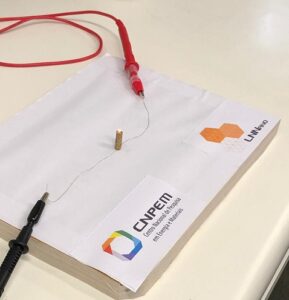A study that opened new sustainable paths, was developed by the National Center for Research in Energy and Materials (CNPEM), in partnership with PUC-RIO.
CNPEM research in partnership with PUC-RIO overcame a challenge in the manufacture of microchannels with high electrical conductivity and paves the way for use in electronic and electrochemical devices.

This major technological challenge was overcome by researchers Mathias Strauss and Murilo Santhiago from the National Center for Research in Energy and Materials (CNPEM) together with Omar Ginoble Pandoli from the Pontifical Catholic University of Rio de Janeiro (PUC-Rio) and their teams funded by the Serrapilheira Institute that used the natural structure of bamboo.
The work was published as an article in the renowned Journal of Materials Chemistry A, of the Royal Society of Chemistry.
Discovery
Bamboo has a large number of hair-thin microchannels, which are perfectly aligned. Scientists have identified between 40 and 60 microchannels in every 1 centimeter of the bamboo culm wall. They constitute the vascular system of the plant that allows the transport of water and nutrients to take place. This network of microtubes (vascular bundles) is necessary for the plant to grow quickly, and in some species it can reach up to 1 meter per week.
With the use of improved electronic microscopy equipment from the National Nanotechnology Laboratory (LNNano), it was possible to accurately map the entire bamboo structure and opened up possibilities for using them to build electrical circuits and integrated electrochemical devices.
big advantages
One of the main advantages of using bamboo to build these electrical circuits is due to the enormous cost and difficulty of using conventional industry means to manufacture microstructures with this arrangement and this micrometric dimension. The metallic coating is very thin (10-15 µm), about ten times smaller than the diameter of the channels, resulting in an extremely light and conductive material.
Another significant and important advantage of using bamboo is the scalability in the production of technological and sustainable products. Because bamboo grows so quickly and easily in tropical countries, most developing economies could exploit it. Having competitive advantage with this new technology in the areas of energy, smart materials and education.


